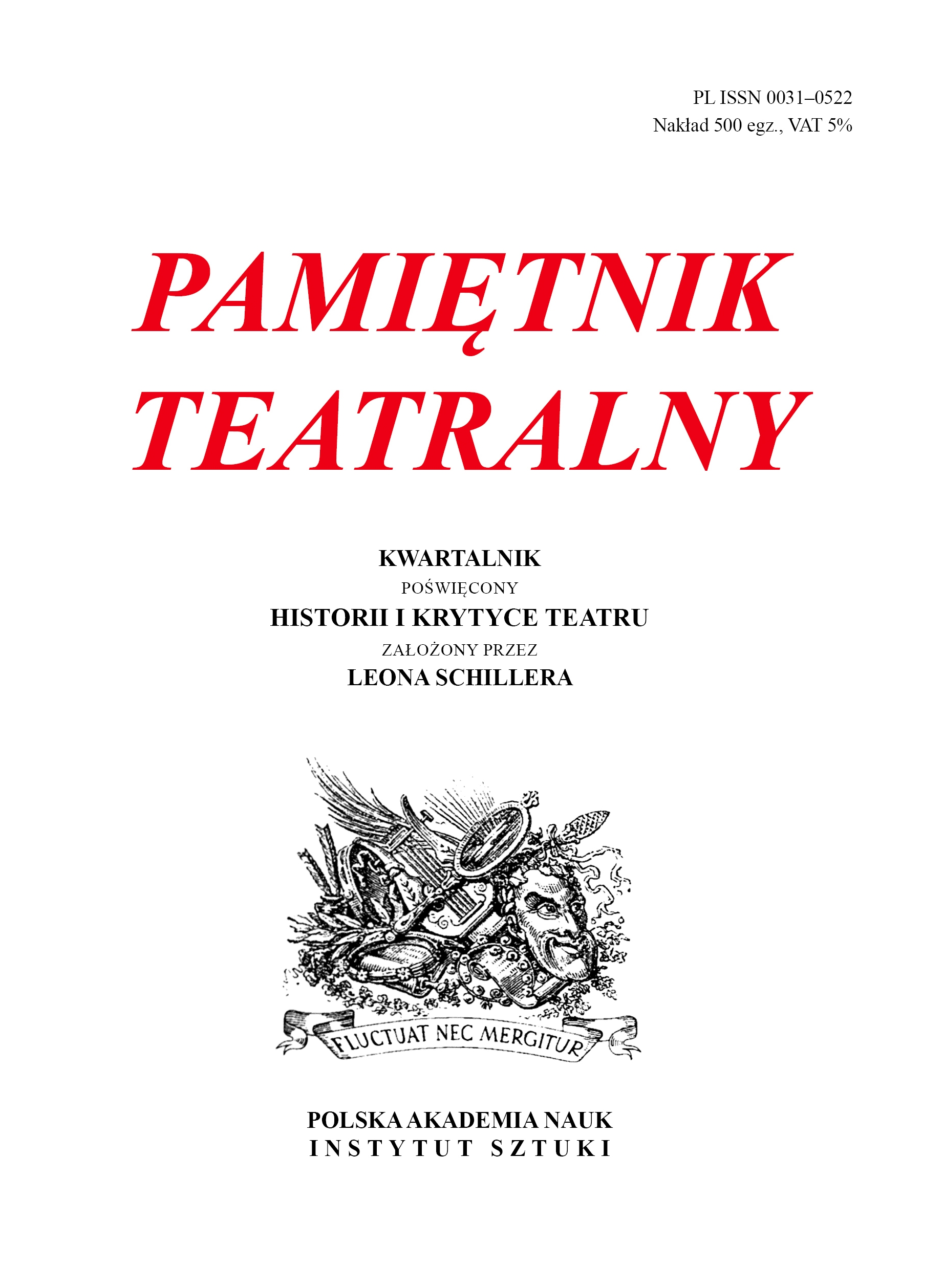Lothar Schreyer a sztuka sceniczna ekspresjonizmu
Lothar Schreyer and the Scenic Art of Expressionism
Author(s): Günter BerghausContributor(s): Katarzyna Lukas (Translator)
Subject(s): Theatre, Dance, Performing Arts
Published by: Instytut Sztuki Polskiej Akademii Nauk
Keywords: Lothar Schreyer;expressionism;expressionist theatre;German theatre;theatre history;
Summary/Abstract: Expressionism as art movement was a primarily German phenomenon. The expressionist theatre begun and flourished in the Weimar Republic where the style lasted until about 1924, contributing to the rise of a truly modern form of dramatic art in Germany. The first example of expressionist drama was the play Mörder, Hoffnung der Frauen by the painter Oskar Kokoschka, who staged its Vienna première on 4 July 1909. Lothar Schreyer (1886–1966) chose another path of expressionism, grounded in mysticism and spirituality. While Kokoschka’s Viennese production was the work of an absolute theatrical outsider, Schreyer had a thorough professional education in this field. In 1916–1921, he devoted himself to the creation of a completely new form of scenic art and founded two theatre companies in which he could consistently pursue his utopian goals. Schreyer saw the theatre as a metaphysical institution that could give an insight into the harmony and magic of the cosmos, which would enable to distance oneself from “a past man”.
Journal: Pamiętnik Teatralny
- Issue Year: 269/2019
- Issue No: 1
- Page Range: 22-37
- Page Count: 16
- Language: Polish

